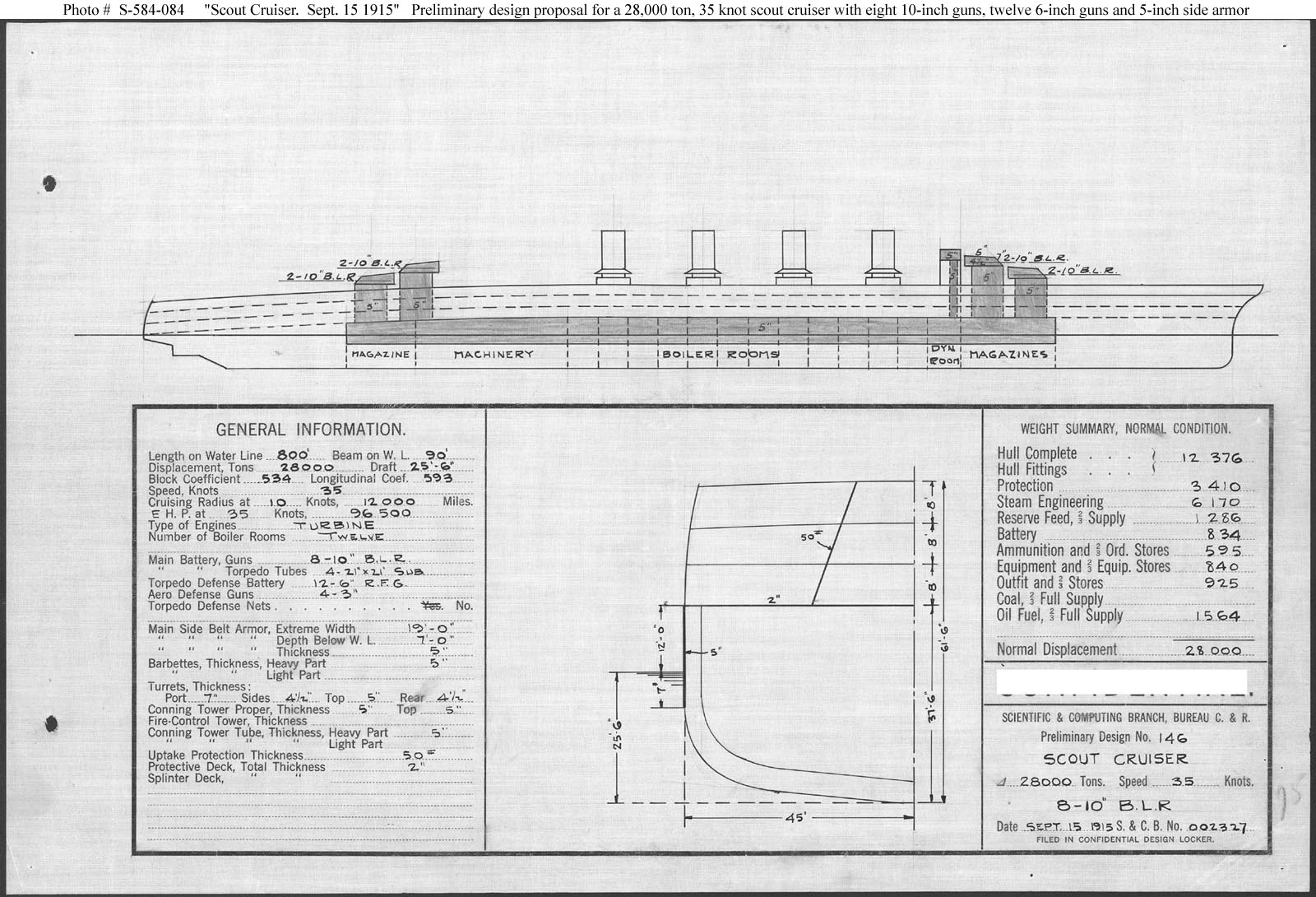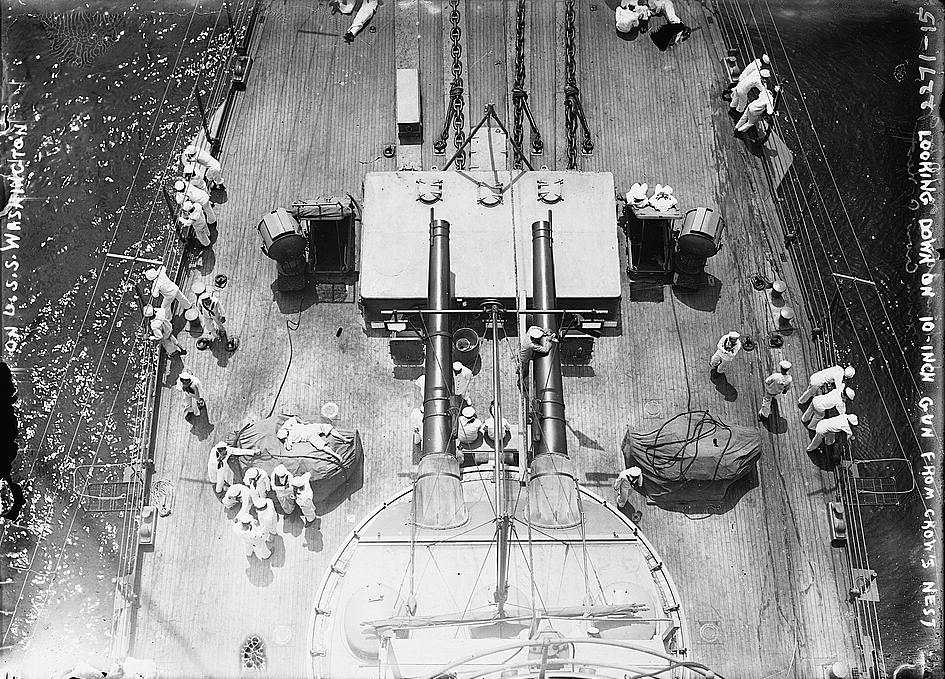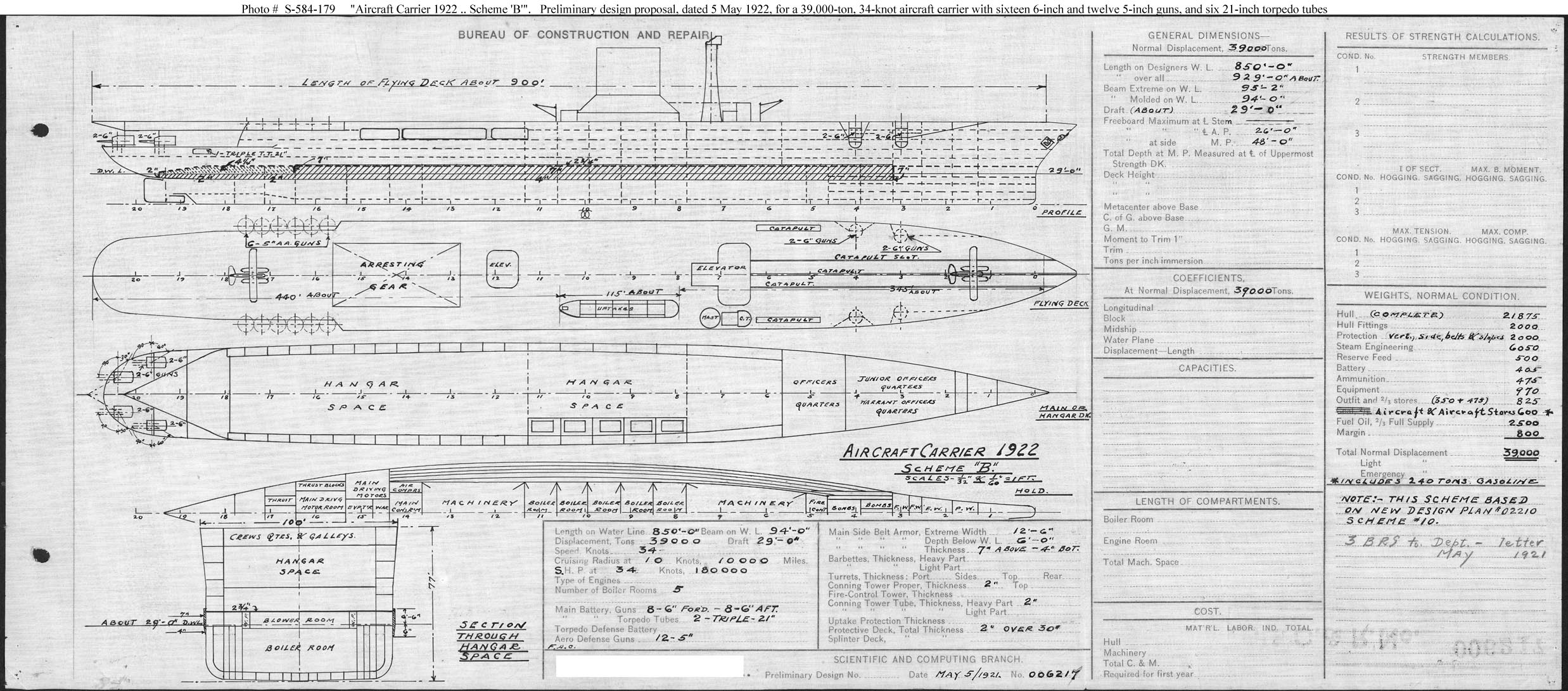Exactly but how many BCs got completed post WWI by the main navy's USN/RN/IJN?
Three.
Hood,
Alaska, Guam. But these aren't built to be or function as battlecruisers.
By the time of the DMs everybody have been building treaty constrained 10,000~t CAs/CLs for nearly two decades, by that time its DM at 17,255 v 10,000-13,000t treaty CAs (so 75% of DM size) this is a 28,000t v 5-7000t average CL (so 25%). I think this is more of an advantage than you really need unless you need the size for range rather than fighting?
The best advantage should be the one that is sought out, not the roughly equivalent ship that has marginally the same capabilities. That, and
Des Moines does have the benefit of improved technology to grant better performance.
And the 28k ton version
does seem too large, and I understand your point about it being too close to a battlecruiser, and at that size would agree that it doesn't serve as much purpose as a dedicated BC/BB or smaller CA would. By rerunning the earlier calculations assuming the 50% efficiency (Lexington was to be built with 180k SHP, but had 90k EHP), the ship has enough Shaft Horsepower to operate with only 6 boilers at a max available speed of 35.4 knots. That would likely push the engines too hard, but the ship at 664-ish feet and 20365-ish tons is far more feasible.
For comparison, the US's initial plans for the Pensacola were 620 feet waterline length and 64' 10" beam with 4x3 8" guns, at about 11,500 tons, with absolutely no armor. This was their conception of their treaty cruiser - a
light cruiser (it was reclassified later as a heavy cruiser). So, sans the treaty coming into effect, light cruisers very well could creep up into that 11-12k range in the 1920s. A heavy/fast armored cruiser that was 20k tons, roughly, would not be too far out of the ballpark. And as that heavy cruiser would be a decade older, successive designs might be lighter/smaller as technology improves, which means you go from a 55%/60% size ratio to an ever higher one, which approaches OTL.
The Pensacola was also a class of two ships as well, which goes along with the US
The whole point about heavy cruisers being 10k tons was a result of the reclassification and ensuing buildup, as the US built the most "heavy" cruisers throughout the 20s. (The Japanese started later).
The range is a very important point for Pacific operations, along with self-sufficiency, especially if it is to operate as the flagship of a cruiser/destroyer flotilla in its initial conception.
If nothing can fight the fast battleship why not just buy it by itself, 54.2k is the cheapest option and if it can fight the rest why bother spending more?
Because, historically, more than fast battleships were bought; we never had a fighting unit composed primarily on them.
Heavy cruisers are not purchased to fight enemy battleships.
But from WWI lessons the best raiders never fight warships they just raid and run or even hide as merchant ships.
Unescorted convoys are vulnerable to them, yes. But if the choice is a small flotilla going to raid an escorted fleet, or if a raid is being done on a military target or otherwise hard target, then larger warships would be useful (to minimize retaliation), or a submarine is used instead.
Heavy cruisers can be based at forward locations, at which a battlecruiser/battleship cannot be risked. Think of the US Asiatic fleet, whose largest warship was the
Houston, a
Northampton-class heavy cruiser.
I just think every ton not on the fighting part (ie the fast battleship) is wasted as long as the scout can scout (look and run) so why go 54k+28K when you can go for 75k +7k? Both can scout the same area and the 75k force wins most fights.
Well, you had earlier assumed that the fast battleship would win this hands-down, so what are the changes? The heavy cruiser has larger aviation facilities, but the Lexingtons had more aircraft than our theoretical fast battleship. That did not hamper the determination of your analysis, so the inclusion of a heavy cruiser versus a light cruiser wouldn't impact that. The light cruiser is more easily taken out of commission than the heavy, has shorter-ranged weaponry and as such cannot outshoot anything (while the heavy cruiser could outshoot it). And the fast battleship can take hits that the Lexingtons cannot handle.
By the start of WW2, the US and Japan had numerous heavy cruisers, but only a few more than their battleships. The US has one more heavy cruiser than battleships, and the Japanese six. Heavy cruisers, while being more expensive than light cruisers by a noticeable sum, are more versatile than battleships, as even fast battleships had to be retained for the largest of assaults.
A heavy cruiser is designed to lead forces and provide higher-caliber support when battleships are not available, whether the lack of availability is due to them not being able to keep up with a faster flotilla or because they are required elsewhere (or there is a higher-value target).
a 5-inch belt..oh lordy...thats VULNERABLE :s Interesting idea, basically its a light battlecruiser, but if you thought the Lexington's were fragile, this thing with a 5-inch belt and a LOT of exposed hull...yeesh! When facing ANYTHING other than a CL it would be a case of close eyes, cross fingers and hope that Senpai does not notice you. Still that 35 knot speed is nice, works well with the Omaha's and Lexington's in that regard. But terrifyingly fragile.
It's certainly far more than the
Pensacolas et al had, or the Omahas, etc. and as
@jsb pointed out, the length on these ships are far too long. A ship this size would be rather underarmed for its displacement and armament (though they could sure as heck outrun any battlecruiser in existence). I think the 664 foot option is the best one, or at least gives a better range.



